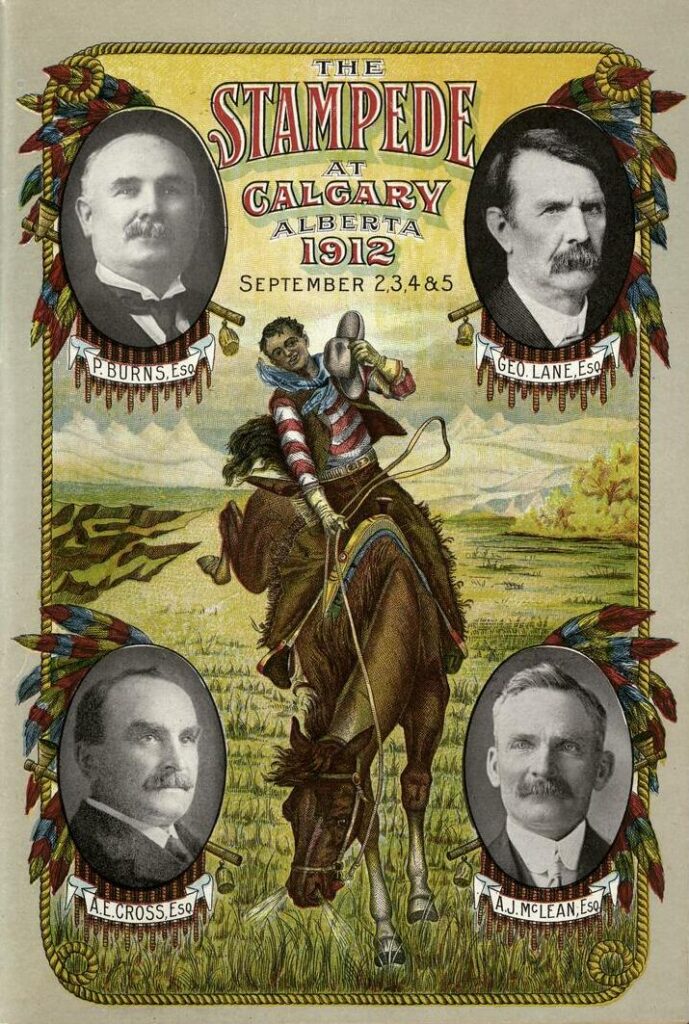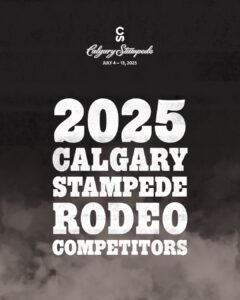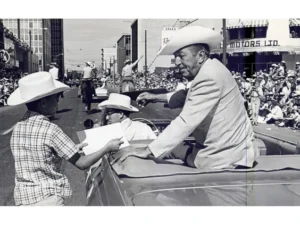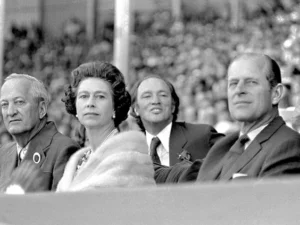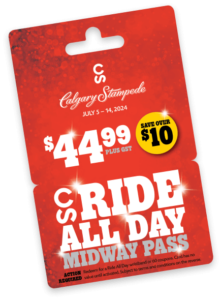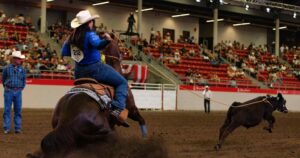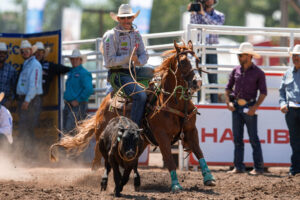Written by: Visit Stampede / Photo Credits: Glenbow Archives & Calgary Stampede
From Modest Beginnings: The Calgary Agricultural Fair (1886-1908)
Before the Calgary Stampede became a world-famous rodeo and celebration of Western heritage, it started as a simple agricultural fair.
In 1886, Calgary was still a small frontier town, but it had a growing ranching and farming community. That year, local agricultural societies organized the first Calgary Agricultural Exhibition. Held at what would later become Stampede Park, the event focused on livestock exhibitions, produce displays, and trade demonstrations.
This first fair was modest compared to today’s spectacle, but it set the stage for a long tradition of showcasing Alberta’s Western culture. Over the next two decades, the event expanded, bringing in more visitors, bigger attractions, and even early rodeo-style competitions.
By 1908, Calgary hosted the Dominion Exhibition, a prestigious national fair. This event featured everything from livestock showcases to thrilling entertainment acts. It also gave Calgary its first taste of aerial excitement, leading to one of the most infamous incidents in Stampede history:
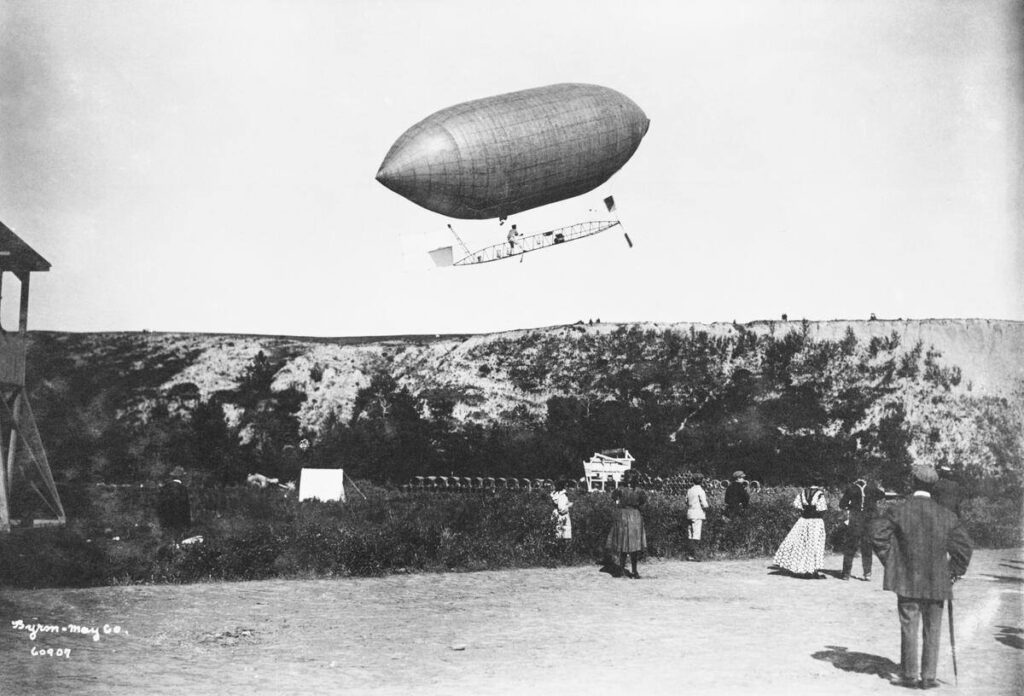
The Strobel Airship Disaster (1908)
One of the star attractions of the 1908 Dominion Exhibition was an experimental airship, brought in by John Strobel, a German-born entrepreneur. His dirigible had already completed five successful flights, drawing massive crowds. But on its sixth flight, something went horribly wrong.
The airship lost control, crashed into the newly built grandstand, and erupted in flames upon impact. Spectators fled in panic, but remarkably, no one was seriously injured.
While this disaster could have been a catastrophe, it instead added to the fair’s legend—proving that Calgary was a place where the unexpected and extraordinary could happen.

Enter Guy Weadick: The Cowboy with a Vision (1912)
While Calgary had a thriving fair and exhibition scene, it lacked a true rodeo-style event. That all changed when Guy Weadick, an ambitious trick roper and vaudeville showman, arrived in town.
Weadick had spent years performing in Wild West shows across North America, including Buffalo Bill Cody’s famous touring show. But he wanted something bigger—a standalone event that captured the spirit of the Old West before it disappeared forever.
At first, Calgary’s business elite were skeptical. Ranching and agriculture were central to the city’s identity, but few believed a rodeo-style event could be profitable.

The Big Four: The Men Who Made the Stampede Happen
Weadick’s dream could have died right there, but he found four key allies—wealthy ranchers and businessmen who believed in his vision. These men became known as “The Big Four”:
- Patrick Burns – A cattle baron and meatpacking tycoon.
- A.E. Cross – A brewer and businessman.
- George Lane – Owner of the Bar U Ranch and a major cattle exporter.
- Archie McLean – A highly successful Alberta rancher and politician.
With their financial backing, $25,000 each, Weadick launched the first-ever Calgary Stampede in 1912, offering $20,000 in prize money—an unheard-of sum at the time.
The First Stampede: A Smash Hit (1912)
The 1912 Calgary Stampede was a massive success, attracting over 40,000 spectators—nearly Calgary’s entire population at the time.
The event featured:
- World-class rodeo competitions, including bronc riding, steer roping, and trick riding.
- Indigenous cultural showcases, with participation from the Blackfoot, Stoney Nakoda, and Tsuu T’ina Nations.
- Cowboys from across North America, including competitors from Texas, Mexico, and Canada.
- Buffalo Bill Cody’s Wild West performers, adding an extra layer of spectacle.
While the 1912 Stampede was a tremendous success, it had not yet become an annual tradition. Calgary’s business leaders were reluctant to commit to holding the event every year, and for the following decade, the city’s focus shifted back to its established agricultural exhibitions. Guy Weadick attempted to bring the Stampede to other cities, hoping to capture the same magic, but these efforts fell short. In 1913, the Stampede moved to Winnipeg, Manitoba, and in 1914, it travelled to upstate New York. Neither of these ventures matched the triumph of 1912, and with the outbreak of the First World War, plans for a regular Stampede were put aside.
World War I and the Return of the Stampede (1919)
The years of the First World War (1914–1918) saw the idea of a permanent Stampede put on hold as Calgary directed its energies towards the war effort and large public events were reduced. However, in 1919, Weadick saw a new opportunity. He proposed a Victory Stampede to celebrate the homecoming of soldiers, and the city gave its support. This Stampede proved to be another major achievement, though it became especially memorable for an unexpected incident—an emergency landing by a fighter pilot right on the grounds.

Freddie McCall’s Carousel Landing (1919)
On July 5, 1919, Freddie McCall, a Canadian World War I flying ace, credited with 37 kills, was flying a Curtiss JN-4 “Jenny” biplane over the Stampede grounds. Onboard were the two young boys, the sons of exhibition manager Ernie Richardson.
Just after takeoff, McCall’s engine failed. With thousands of spectators below, he had seconds to decide where to land. Fred had 3 choices;
- The race track, where speeding cars could cause a deadly crash
- The crowded midway, packed with fairgoers
- The carousel, which had a sturdy conical roof and a spike to impale the plane on
McCall aimed for the carousel—and landed directly on top of its roof. Miraculously, no one was injured, and McCall and the kids walked away completely unharmed. His death-defying landing became an instant Calgary legend, solidifying the wild and unpredictable nature of the Stampede.
The Birth of the Modern Stampede (1923)
By the early 1920s, Calgary had two major events:
- The Calgary Industrial Exhibition (a continuation of the original 1886 fair)
- The Calgary Stampede (held in 1912 and 1919)
In 1923, the two events officially merged, creating the Calgary Exhibition & Stampede—the annual event we know today.
This year also marked the introduction of 2 iconic events – the chuckwagon races, one of the most thrilling and chaotic events in Stampede history, and the Pancake Breakfast, generally only chaotic behind the scenes.
The Stampede’s Legacy: A Tradition of Wild, Unforgettable Moments
The Calgary Stampede’s early years were filled with daring pioneers, unexpected disasters, and larger-than-life characters. From John Strobel’s airship explosion to Freddie McCall’s mid-air heroics, the Stampede has always been about high-stakes, high-energy entertainment.
What began as a modest agricultural fair in 1886 evolved into a world-class rodeo—thanks to the vision of Guy Weadick, the financial backing of the Big Four, and the spirit of countless cowboys, ranchers, and performers.
Today, the Calgary Stampede remains a global celebration of Western heritage—but its wild, unpredictable origins are what make it truly legendary.

